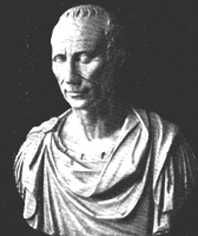Roman Forum Area
|
WE ARE IN THE YEAR 347 AFTER CHRIST: COME WITH ME TO VISIT THE FORUM At the bottom of the ramp at the Forum’s entrance, you are now on the most important length of paving stones in the world: the Sacred Way (La Via Sacra). Basilica Aemilia
(Tempio del Divo Giulio Cesare). This tall temple, built to honor the first mortal we made into a God (after murdering him), stands high overlooking the Forum on the spot where his funeral pyre burned. He had been stabbed as he entered the temporary Senate on the very day he has to be promoted from Dictator of the Republic to King of a renewed Monarchy. His home was just behind, next to the Regia, which was convenient for Caesar as he had already been named Pontifex Maximus (High Priest). A couple of years later Augustus, who became our first Emperor, had this temple built to honor the man he most admired and on whose example the Golden Age of Augustus was based; an Altar stands in front of the temple in its semi-circular niche, just where the Father of Our Country was cremated, amidst the sobbing of the plebs. Shrine of Venus Cloacina (Edicola della Venere Cloacina). Situated right in front of the Basilica Aemelia, this rounded slab of marble sits over the Cloaca Maxima, - or Sacred Sewer - built by King Tarquinius Superbus in the days when we chose those Etruscans as our leaders, two centuries after our founding. He drained the marsh below the Palatine and Capitoline Hills in order to open up this Forum as a real estate development. The sewer pipes underground are large enough for men to clean them out and all public buildings are connected to the main drain. Be sure to visit the Mouth of the Cloaca Maxima where it empties out into the Tiber just below Isola Tiberina.
|

